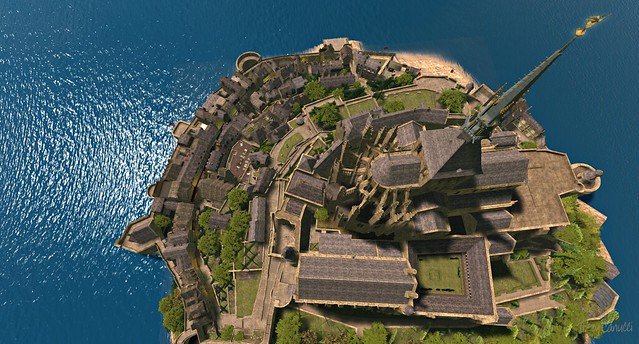In the flush of youth, mortality seems so far away, irrelevant even. Technology is like that too. We dig into programs seeing what they will do for us now, without really thinking what they might be like in a dozen years time. If that future was imaginable, it would probably have already been in the program. Programs move on to another version, and and we either like the extra things we can do, or we no longer need them, or we find something else new and exciting. Just tools. And yet….
Virtual worlds are different. They are called persistent environments because they remain when everyone’s logged out – a technical descriptor. But this is a persistence of the product of people’s creativity and that’s not something neutral in value. Technical persistence is one thing; psychological permanence is another.
If I load any other program, it comes up with a blank screen. My work is stored on the hard drive ready to be opened. The two are interdependent, but not integral. I certainly don’t expect to open the program and see the culmination of seven years work and experience laid out before me in one spread. However, if I go into Second Life I land at home and it is the same place, with variation, that I have seen every week for several years. There are other places that are just as familiar. The world is instantly around me – no wandering off to find the file that I was last working on.
From my own experience, when I’d been in Second Life a couple of years or less, nothing was truly familiar, and change was just change, like the weather. It is time establishes permanence, a psychological feeling born out of familiarity. We may have regrets about the temporary disappearing, but that is for imagined possibilities that will never come to be, not loss. The sense of loss is always over things that seemed permanent – which is, of course, purely relative and perceptual. Nothing lasts for ever.

It seems that there is a long-established region closing regularly these days. In a virtual world that had been around a couple of years, would that be seen as being so important? I don’t think so. In a world that is 12 years old, places become psychologically permanent and every year, as time goes on, there are further places that quality. It is not nostalgia, as it might be for a game played on a Commodore 64 or even Windows 3.1. Virtual worlds for their residents are not just persistent environments, a technicality, but they are a world they inhabit for periods of time.
This all comes back to life as an embodied experience. Our life experiences are sensed through our body – it is always with us. We have a visceral connection with the world we inhabit, and the empathetic recreation of our bodies in virtual worlds regenerates a visceral connection in another space. Furthermore we think about virtual worlds (or games) when we are in real life (and vice versa). The experience does not finish when the program is shut down. There is much talk about presence and immersiveness in games – persistence in space and time, within and across worlds, is another aspect that should be considered important. This is not just a virtual experience.
